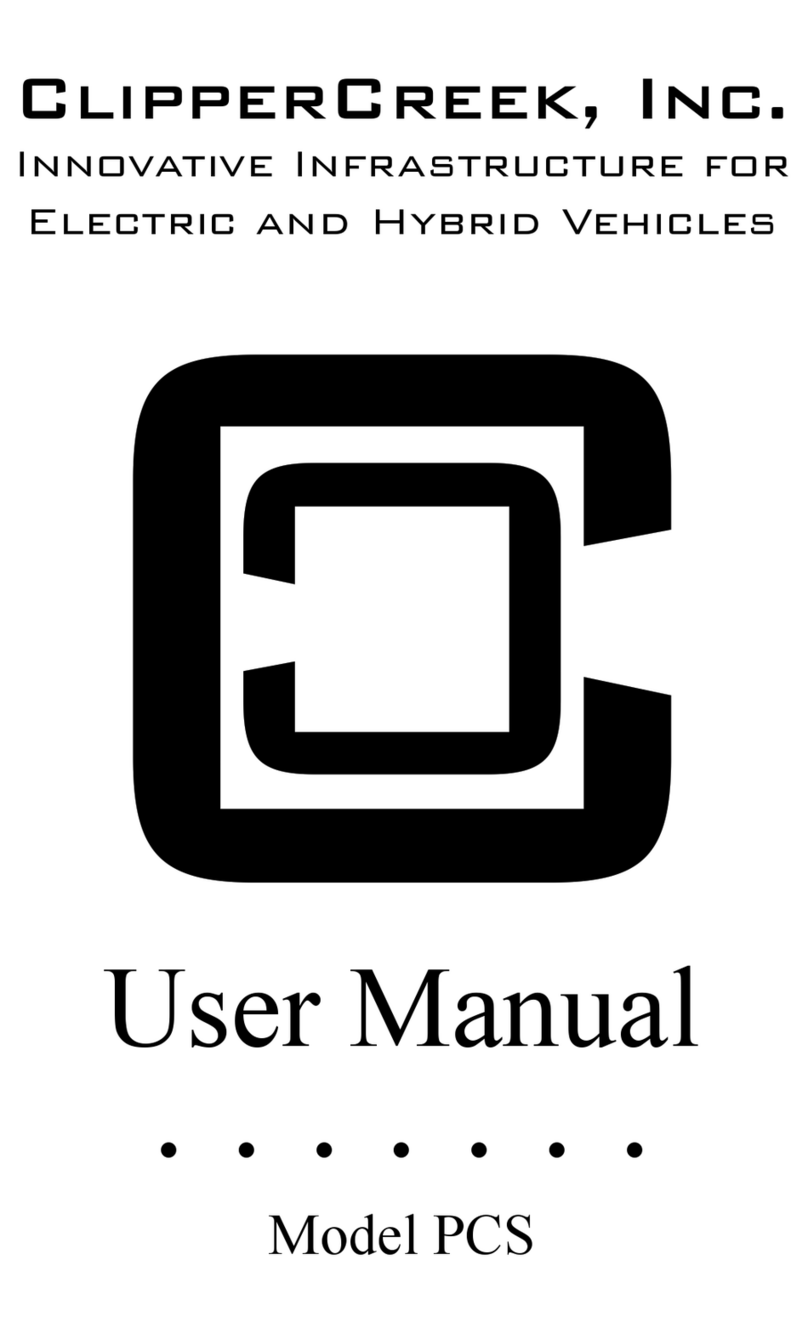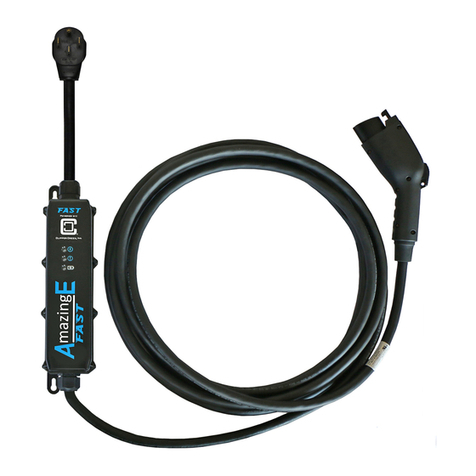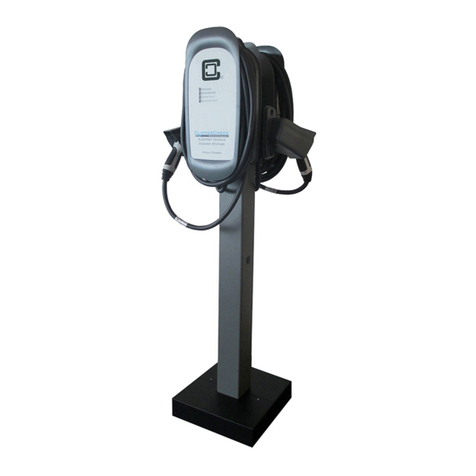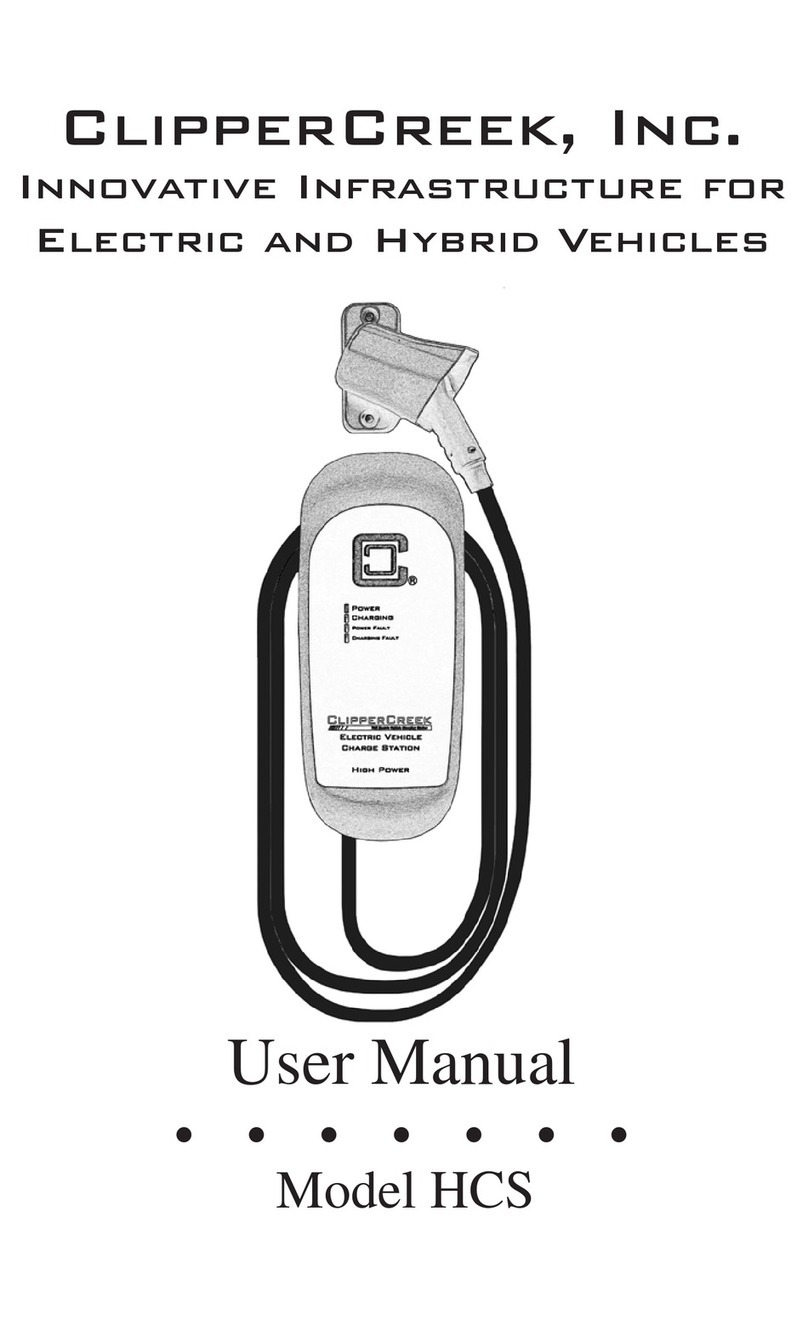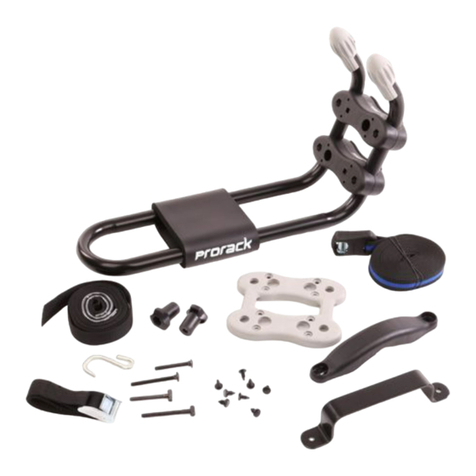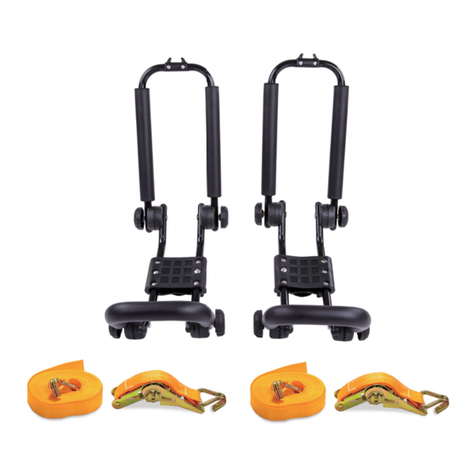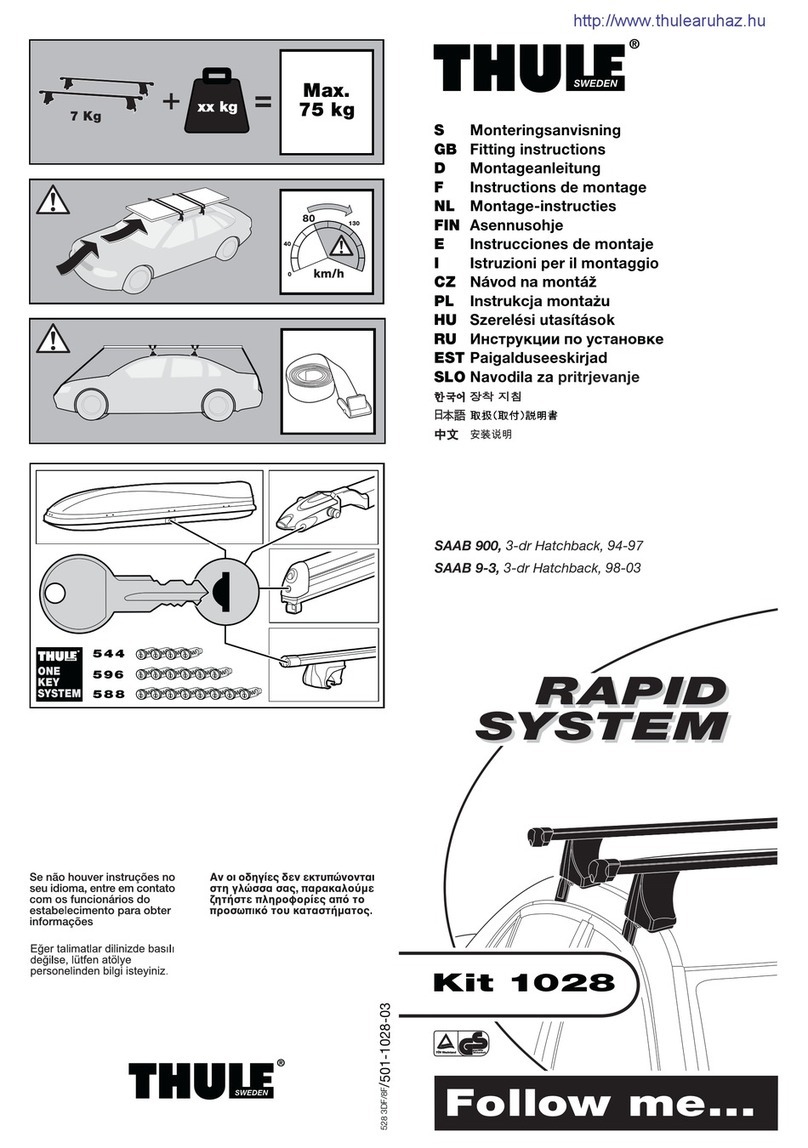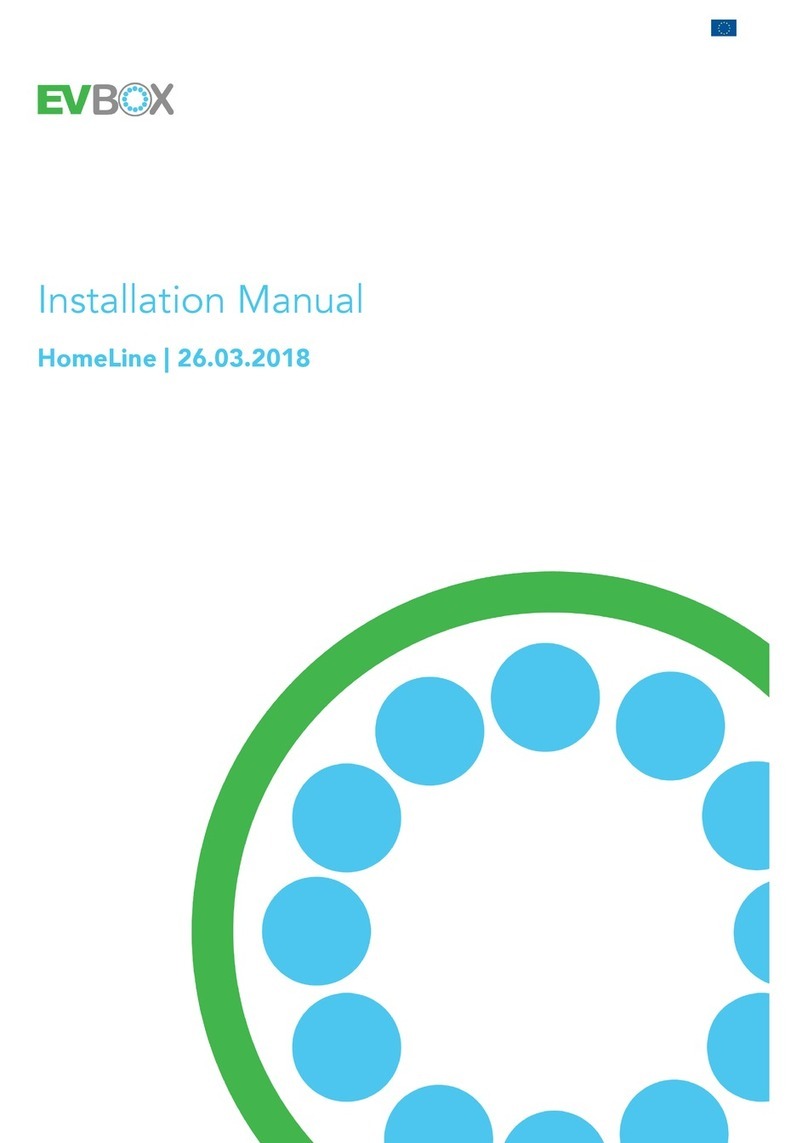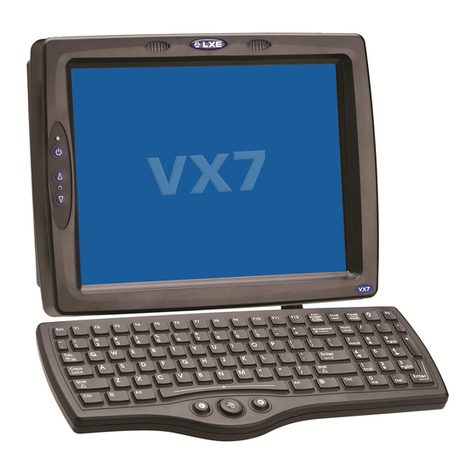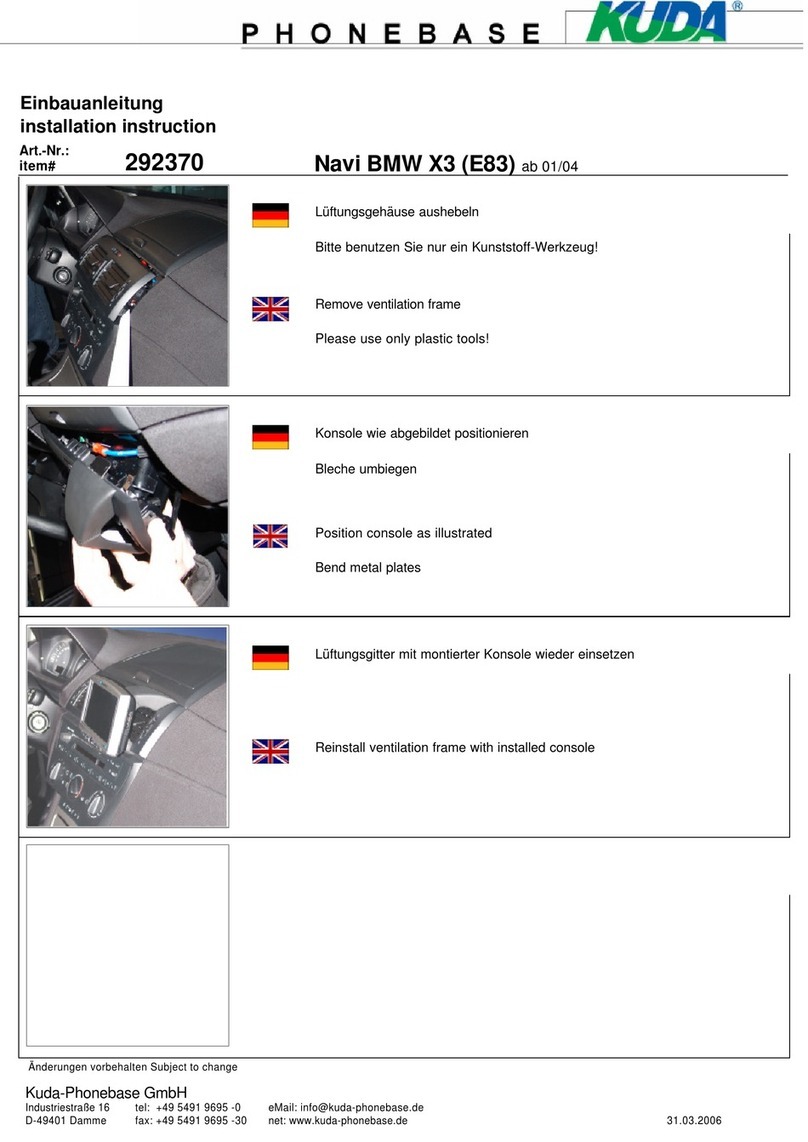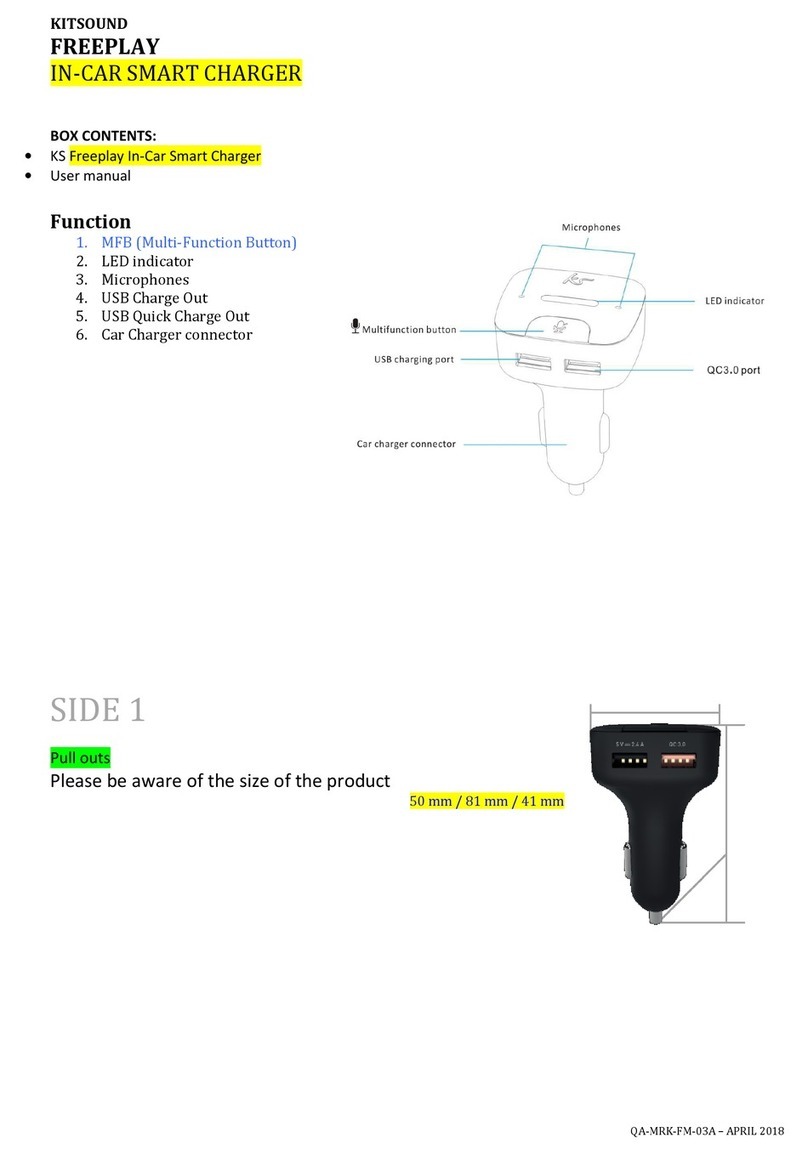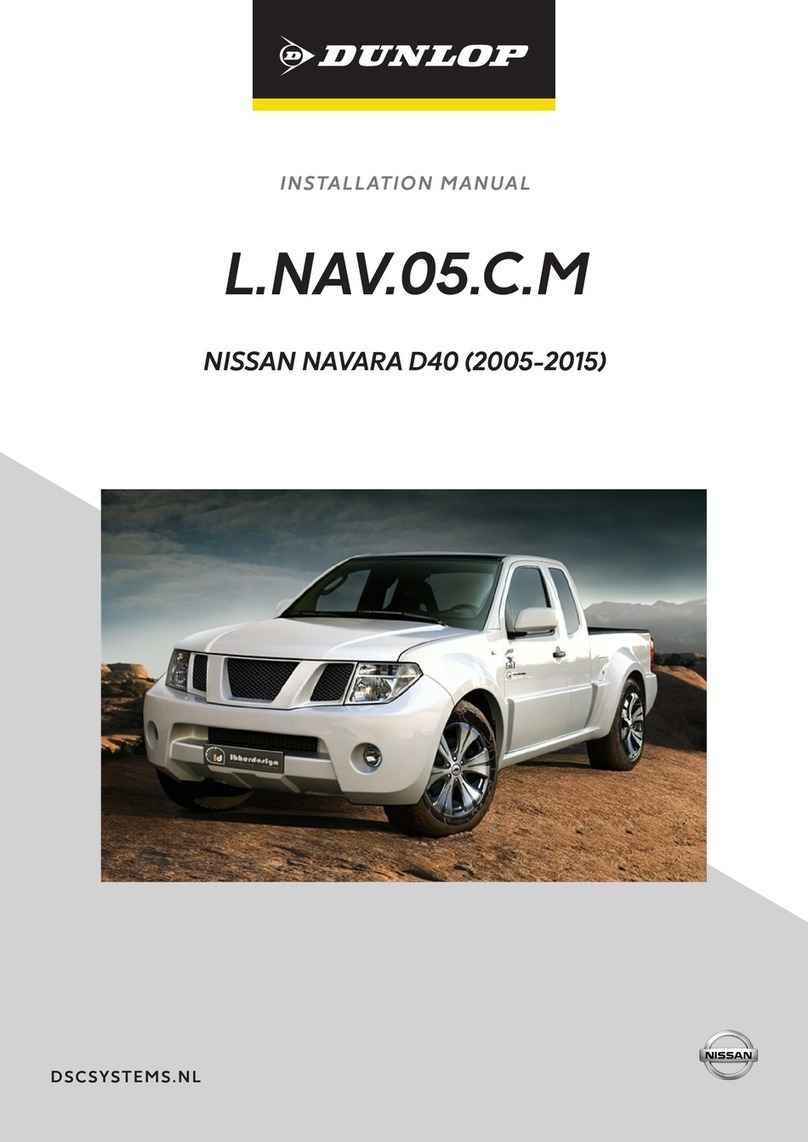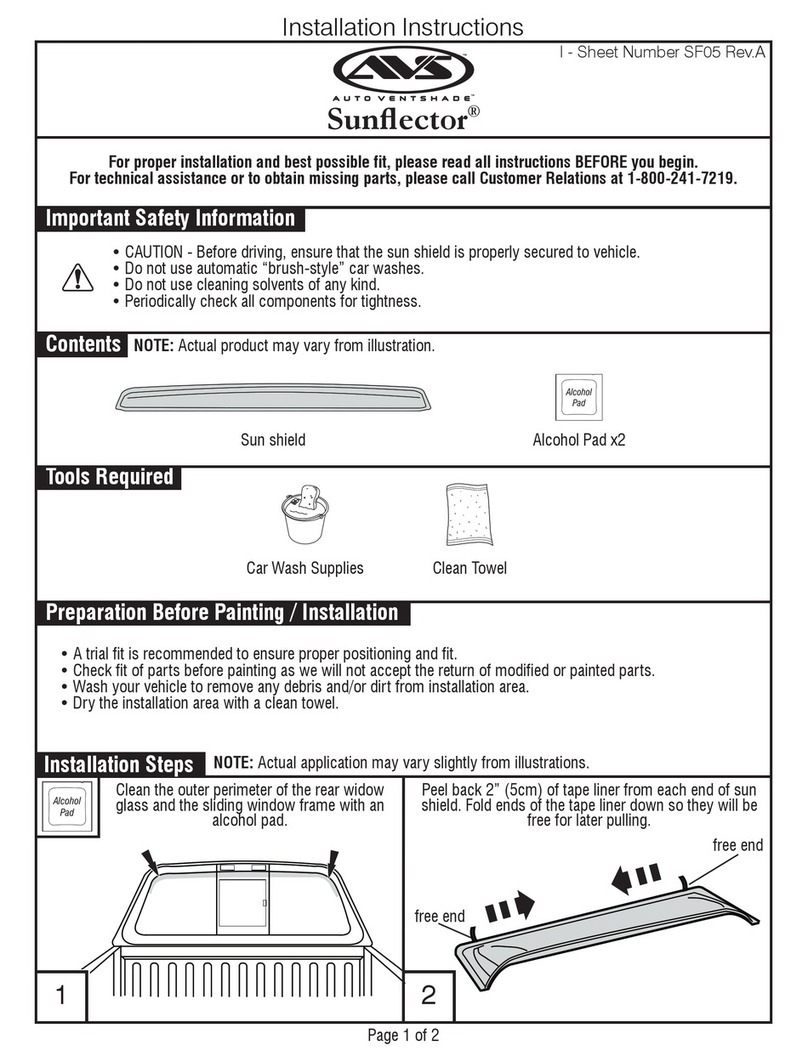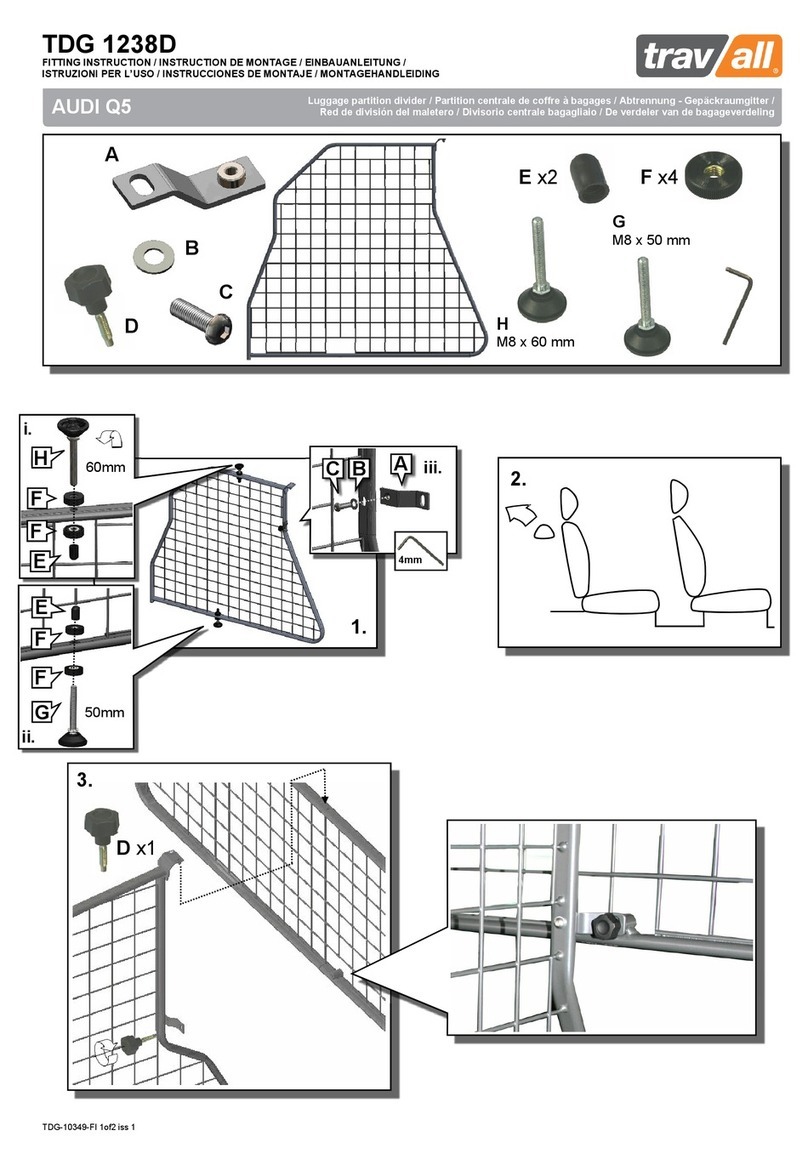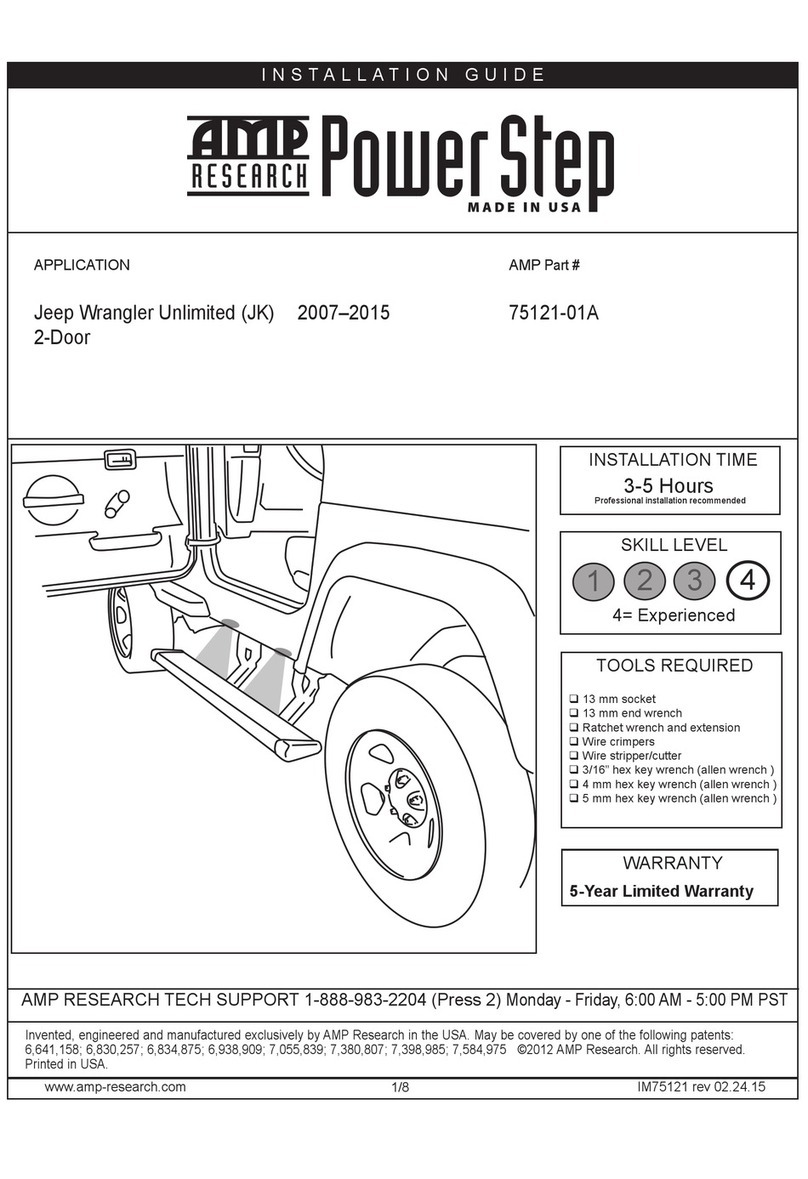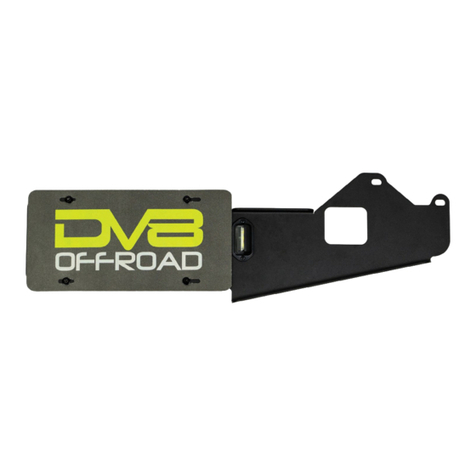ClipperCreek HCS-D Series User manual

ClipperCreek, Inc.
Innovative Infrastructure for
Electric and Hybrid Vehicles
• • • • • • •
Model HCS-D
User Manual

HCS-D User Manual
2
To view the latest version of this manual please visit
clippercreek.com/installation-manuals
HCS-D User Manual, Version 3, August 2019
Copyright © 2019 ClipperCreek, Inc.
All rights reserved. Printed in the USA.
Manual Number: 7004-0034
PLEASE NOTE
This user manual includes the latest information at the time of
printing. ClipperCreek, Inc. reserves the right to make changes to
product by other than an authorized service facility may void the
product warranty.
Contact a Customer Service Representative with any questions about
the use of this product. (877) 694-4194
WARNING: This product can expose you
to chemicals, including Carbon Black, which
is known to the State of California to cause
cancer. For more information go to:
www.P65Warnings.ca.gov

HCS-D User Manual
3
CONTENTS
IMPORTANT SAFETY INSTRUCTIONS........................................5
Instructions Pertaining to a Risk of Fire or Electric Shock 6
FCC INFORMATION....................................................................11
OPERATION...................................................................................12
The HCS-D Front Panel 13
INSTALLATION - SERVICE CONNECTIONS.........................14
MOUNTING PROCEDURES .......................................................22
HCS-D EVSE Mounting for Hollow-Wall Construction 24
HCS-D EVSE Mounting for Solid-Wall Construction 25
WIRING INSTRUCTIONS (Hardwired HCS-D) .......................27
RECEPTACLE INSTRUCTIONS (Plug-In HCS-D)..................28
GROUNDING INSTRUCTIONS..................................................29
HCS-D Hardwired EVSE Grounding 29
HCS-D Plug-In EVSE Grounding 29
USING THE PADLOCK................................................................30
MOVING & STORAGE INSTRUCTIONS.................................31
MAINTENANCE ...........................................................................32
MOUNTING THE
SAE-J1772TM
CONNECTOR HOLSTERS...33
CHARGE CABLE WRAP GUIDELINES ...................................35
CUSTOMER SUPPORT................................................................36
SPECIFICATIONS.........................................................................37
WARRANTY INFORMATION (3 Year Standard) .....................38
WARRANTY INFORMATION (5 Year Ruggedized) .................39

HCS-D User Manual
4
ILLUSTRATIONS
Figures
1. HCS-D Front Panel .......................................................................................13
2. 220/240V Single Phase .................................................................................18
3. 208V 3-Phase, Wye-Connected.....................................................................18
4. 240V 3-Phase, Delta-Connected, w/Center-Tap on One Leg........................19
5. Mounting the HCS-D to a Hollow-Wall........................................................24
6. Mounting the HCS-D to a Solid-Wall ...........................................................26
7. Wiring the HCS-D in a Junction Box............................................................27
8. Preferred Orientation of the NEMA Receptacles Below
the Plug-in HCS-D ........................................................................................28
9. Locking the SAE-J1772TM Connector with Padlock Included.......................30
10. Charge Connector Secured with Padlock which Cannot
be Removed from Vehicle without Key........................................................30
11. Padlock Used in Combination with Connector Holster After Charging .......30
12. Mounting the SAE-J1772TM Connector Holsters Using the
Exterior Wood Screws and Washers..............................................................34
13. Example of Installed HCS-D and Two Connector Holsters..........................34
14. Charge Cable Draped too Tightly Around the HCS-D Enclosure.................35
Tables
1. Front Panel LED Information........................................................................13
2. Service Connections for Standard and Ruggedized HCS-D .........................14

HCS-D User Manual
5
IMPORTANT SAFETY INSTRUCTIONS
ClipperCreek Electric Vehicle Supply Equipment (EVSE) is
designed with the safety concerns of the end user as an utmost
priority; however, the following safety precautions must be read
and followed:
• The EVSE and electrical wiring should be installed by a
codes and ordinances.
• Grounding Instructions - The EVSE should be connected
to a grounded, metal, permanent wiring system; or an
equipment-grounding conductor should be run with
circuit conductors and connected to a grounding terminal
or lead on the EVSE. Connections to the EVSE should
comply with all local electrical codes and ordinances.
• Call the local service provider anytime a procedural
question arises; DO NOT attempt to perform a procedure
you are unsure of.
• Read all installation instructions carefully before
performing the pedestal and EVSE installation.
Carefully read these instructions and the charging instructions
in your vehicle owner’s handbook before charging your electric
vehicle.
The following symbols may be found in this manual or on labels
This means pay particular attention. Notes contain helpful
suggestions.
Cela signie accorder une attention particulière. Les
remarques contiennent des suggestions utiles.
Esto signica que debe prestar especial atención. Las notas
contienen sugerencias útiles
.
CAUTION: This symbol means be careful. You are
capable of doing something that might result in damage to
equipment.
NOTE:

HCS-D User Manual
6
ATTENTION: Ce symbole signie être prudent. Vous
êtes capable de faire quelque chose qui pourrait causer des
dommages à l’équipement.
PRECAUCIÓN: Este símbolo signica que debe tener
cuidado. Usted es capaz de hacer algo que podría dañar el
equipo.
WARNING: This symbol means danger. You are in a
situation that could cause bodily injury. Before you work
on any electrical equipment, be aware of the hazards
involved with electrical circuitry and standard practices for
preventing accidents.
AVERTISSEMENT: Ce symbole signie un danger.
Vous êtes dans une situation qui pourrait causer des
blessures corporelles. Avant de travailler sur un équipement
électrique, être conscient des dangers présentés par les
circuits électriques et les pratiques courantes de prévention
des accidents.
ADVERTENCIA: Este símbolo signica peligro. Usted
está en una situación que podría causar lesiones corporales.
Antes de trabajar en cualquier equipo eléctrico, tenga en
cuenta los peligros relacionados con los circuitos eléctricos
y las prácticas estándar para prevenir accidentes.
Instructions Pertaining to a Risk of Fire or Electric Shock
When using the HCS-D, basic electrical safety precautions should
be followed:
• Use this EVSE to charge electric vehicles equipped with an
SAE-J1772TM charge port only. Consult the vehicle’s owner
manual to determine if the vehicle is equipped with the
correct charge port.
• Make certain the EVSE SAE-J1772TM charge cable is
positioned so it will not be stepped on, tripped over, or
otherwise subjected to damage or stress.
• This product contains no user serviceable parts. Consult
the Customer Support section in this manual for service

HCS-D User Manual
7
information. Do not attempt to repair or service the EVSE
yourself.
• Do not operate your EVSE if it or the SAE-J1772TM charge
cable is physically open, cracked, frayed, or otherwise
visibly damaged. Contact a Service Representative for
service immediately. Consult the Customer Support
section in this manual for information on the Service
Representative in your area.
• Not for use in commercial garages where a
portion thereof) used for the repair of internal combustion
SAE-J1772TM charge cable.
• Do not allow children to operate this device. Adult
supervision is mandatory when children are in proximity to
an EVSE that is in use.
Instructions se Rapportant à un Risque d’Incendie ou de
Choc Électrique
Lorsque l’utilisation de la HCS-D, précautions fondamentale de
sécurité électrique doivent être suivies:
• Utilisez cette station de recharge pour charger les véhicules
électriques équipés d’un SAE-J1772TM port de recharge
seulement. Consultez le manuel du propriétaire du véhicule
port de recharge.
• Assurez-vous que le SAE-J1772TM câble de recharge sur la
station de recharge est positionné de telle sorte qu’il ne sera
pas piétiné, accroché plus de, ou autrement endommagé ou
de subir le stress.
• Ce produit ne contient aucune pièce réparable par
l’utilisateur. Consultez la section Support à la Clientèle
dans ce manuel pour obtenir des informations de service.

HCS-D User Manual
8
N’essayez pas de réparer ou d’entretenir la station de
recharge vous-même.
• Ne faites pas fonctionner votre station ou le câble de
votre représentant du service pour service immédiatement.
Consultez la section Support à la clientèle dans ce manuel
pour obtenir des informations sur le représentant du service
dans votre région.
• Ne pas utiliser dans les garages commerciaux où un garage
partie) utilisé pour la réparation de véhicules à combustion
interne dans lequel la zone peut être classée en raison
l’essence.)
• Ne posez pas les doigts à l’intérieur de l’extrémité du
SAE-J1772TM coupleur du câble de recharge.
• Ne pas laisser les enfants utiliser cet appareil. Supervision
d’un adulte est obligatoire lorsque des enfants sont à
proximité d’une station de recharge qui est en cours
d’utilisation.
Instrucciones sobre Riesgo de Incendio o Descarga Eléctrica
Al utilizar el HCS-D, se deben seguir las siguientes precauciones
básicas de seguridad eléctrica:
• Utilice este EVSE para cargar vehículos eléctricos
equipados con un puerto de carga SAE-J1772TM
únicamente. Consulte el manual del propietario del
vehículo para determinar si el vehículo está equipado con el
puerto de carga correcto.
• Asegúrese de que el cable de carga del EVSE SAE-J1772TM
esté colocado de manera que no sea pisado, ni cause
tropiezos, ni se someta a daños o tensiones.
• Este producto no contiene partes reparables por el usuario.
Consulte la sección de Atención al Cliente en este manual

HCS-D User Manual
9
para obtener información de servicio. No intente reparar o
reparar el EVSE usted mismo.
• No opere su EVSE si éste o el cable de carga SAE-
J1772TMestán físicamente abiertos, agrietados,
deshilachados o dañados de otra manera. Póngase en
contacto con un Representante de Servicio Técnico
para su reparación. Consulte la sección de Atención al
Cliente en este manual para obtener información sobre el
Representante de Servicio Técnico en su área.
• Este dispositivo no es para uso en garajes comerciales,
una instalación (o parte de la misma) utilizada para la
reparación de vehículos de combustión interna, en los
• No coloque los dedos dentro del extremo del acoplador del
Cable de carga SAE-J1772TM.
• No permita que los niños operen este dispositivo. La
supervisión de un adulto es obligatoria cuando haya niños
que estén cerca de un EVSE que está en uso.
WARNING:
circuit breaker panel before servicing or cleaning the unit.
AVERTISSEMENT: Couper l’alimentation d’entrée à
votre station de recharge sur le panneau de disjoncteur
avant de nettoyer ou de réparer l’appareil.
ADVERTENCIA: Apague la alimentación de entrada a
su EVSE en el panel del interruptor automático, antes de
realizar el servicio o de limpiar la unidad.
VENTILATION: Some electric vehicles require an external
ventilation system to prevent the accumulation of
hazardous or explosive gases when charging indoors.
Consult the vehicle owner’s manual to determine if
your vehicle requires ventilation during indoor charging.
NOTE
:

HCS-D User Manual
10
VENTILATION: Certains véhicules électriques
nécessitent un système de ventilation externe pour éviter
l’accumulation de gaz explosifs ou dangereux lors de la
charge à l’intérieur. Consultez le manuel du propriétaire du
véhicule pour déterminer si votre véhicule nécessite une
ventilation quand le recharge en salle.
VENTILACIÓN: Algunos vehículos eléctricos requieren
un sistema de ventilación externo para evitar la
acumulación de gases peligrosos o explosivos, al ser
cargados en interiores. Consulte el manual del propietario
del vehículo para determinar si su vehículo requiere
ventilación durante la carga en interiores.
Vehicles which conform to the SAE-J1772TM standard for
communication can inform the EVSE that they require
an exhaust fan. The HCS-D is not equipped to control
ventilation fans. Do not charge the vehicle with the HCS-D
if ventilation is required.
Véhicules qui sont conformes à la norme SAE-J1772TM de
communication peuvent informer la station de recharge
qu’ils nécessitent un ventilateur d’extraction. Le HCS-D
n’est pas équipé pour contrôler les ventilateurs. Ne chargez
pas le véhicule avec les HCS-D si la ventilation est
nécessaire.
Los vehículos que cumplan con el estándar de
comunicación SAE-J1772TM pueden informar que su EVSE
requieren un extractor de aire. El HCS-D no está equipado
para controlar ventiladores. No cargue el vehículo con el
HCS-D si se requiere ventilación.
CAUTION: DO NOT CHARGE a vehicle indoors if it
requires ventilation. Contact your Service Representative
for information.
ATTENTION: NE PAS RECHARGER un véhicule à
l’intérieur si il nécessite une ventilation. Contactez votre
représentant de service pour plus d’informations.
Save these instructions for future reference.
Conservez ces instructions pour référence future.
NOTE
:

HCS-D User Manual
11
PRECAUCIÓN: NO RECARGUE un vehículo en
interiores si requiere ventilación. Póngase en contacto con
su Representante de Servicio Técnico para obtener más
información.
Guarde estas instrucciones para referencias futuras.
FCC INFORMATION
This device complies with Part 15 of the FCC rules. Operation
is subject to the following two conditions: (1) This device may
not cause harmful interference, and (2) This device must accept
any interference received, including interference that may cause
undesired operation.
This product has been designed to protect against Radio Frequency
Interference (RFI). However, there are some instances where high
powered radio signals or nearby RF-producing equipment (such as
operation.
If interference to the EVSE is suspected, the following steps
should be taken before consulting a ClipperCreek Sales or Service
Representative for assistance:
1. Reorient or relocate nearby electrical appliances or
equipment during charging.
during charging.
CAUTION
by other than an authorized service facility may void
FCC compliance.
ATTENTION:
qui conque autre qu’un centre de service autorisé peut
annuler la conformité FCC.
PRECAUCION
producto por parte de un centro de servicio autorizado
pueden anular el cumplimiento de la FCC.

HCS-D User Manual
12
OPERATION
NOTE:
discussed in this manual; we recommend contacting
ClipperCreek, Inc., as some units are not yet available.
The HCS-D EVSE is a compact wall or pedestal-mounted EVSE
that provides the Plug-in Hybrid or Battery Electric Vehicle
(together Plug-In Electric Vehicles, or “PEV”) user with a safe and
manageable link between the power grid and the PEV.
Simply unwrap the SAE-J1772TM charge cable and plug the
can be in use at the same time. When one connector is plugged
into a vehicle, the EVSE makes 100% of its power available to
that vehicle. When both connectors are plugged into vehicles
requesting power, the EVSE splits the power evenly between the
vehicles. When one vehicle completes its charge, the other vehicle
has access to 100% of the power until it completes charging, is
unplugged, or another vehicle that requests power is connected to
the HCS-D. The status of each connected vehicle is displayed on
the front panel of the HCS-D.
Normally, the vehicle will immediately request a charge once the
cable is plugged into the vehicle. Within a few seconds the green
“Charging” light on the face of the HCS-D will turn on and the
charging cycle will begin. After an average driving day the vehicle
battery pack will require several hours to recharge completely.
Charging overnight is the most convenient way to maintain healthy
batteries and ensure the vehicle’s full range will be available for
the next day.
When the vehicle has stopped charging the green “Charging” light
charge cycle has completed (or to interrupt a charge in progress)
press and hold down the latch release lever on the connector
unplug the connector from the vehicle charge port.

HCS-D User Manual
13
The HCS-D Front Panel
The front panel on the HCS-D has six
indicator lights, as shown in Figure 1.
The three colored indicators - left and
right - display status for each of the
two vehicle connectors.
POWER (Amber), indicates that
power is available to the HCS-D.
FAULT (Red), refer to Fault
Conditions in Table 1.
CHARGING (Green), indicates that
the vehicle is requesting a charge and
AC power is currently applied to the
vehicle.
Figure 1: HCS-D Front
Panel LED Information
Table 1: Front Panel Indicator Information
ON - not
blinking
No power to the EVSE. Check circuit breaker.
EVSE has power, not plugged into PEV, or
PEV not requesting a charge.
Charging enabled, power is applied to the
vehicle.
Ground monitor trip, improper grounding or
ground is not present.
PEV ground fault trip. Check vehicle
connection, disconnect and restart.
Internal PEV Fault. Disconnect from vehicle, turn power
off and then back on. If fault persists, call for service.
Internal PEV Fault. Disconnect from vehicle, turn power
off and then back on. If fault persists, call for service.
Internal PEV Fault. Disconnect from vehicle, turn power
off and then back on. If fault persists, call for service.
Internal PEV Fault. Disconnect from vehicle, turn power
off and then back on. If fault persists, call for service.
Amber
POWER Red
FAULT Fault Condition
#Green
CHARGING
2 ON
3 ON ON
4 ON
1 - blink
2 - blinks
3 - blinks
4 - blinks
5 - blinks

HCS-D User Manual
14
INSTALLATION - SERVICE CONNECTIONS
CAUTION:
circuit provided with the appropriate maximum branch
circuit overcurrent protection in accordance with the
National Electrical Code, ANSI/NFPA 70 (US) or the
Canadian Electric Code C22.2 NO. 280-13 (Canada).
ATTENTION: Pour réduire le risque d’incendie, de se
connecter uniquement à un circuit fourni avec le approprié
circuit de dérivation protection maximale contre les
surintensités, en conformité avec le Code National électrique
ANSI/NFPA 70 (US) ou Code Canadien de l’électricité
C22.2 NO. 280-13 (Canada).
PRECAUCIÓN: para reducir el riesgo de incendio,
conécte el dispositivo solo a un circuito de protección contra
sobrecorriente máxima del circuito derivado, de acuerdo
con el Código Eléctrico Nacional, ANSI/NFPA 70 (Estados
Unidos) O el Código Eléctrico Canadiense C22.2 Número
280-13 (Canadá).
CAUTION: This is a single-phase device. Do not connect
all three phases of a 3-phase feed! You may use any two
phases of a three phase wye-transformer feed. The
centerpoint of the three phases (usually used as Neutral)
HCS-D40 (Hardwired) 40A n/a
HCS-D40P NEMA 6-50P 40A/50A NEMA 6-50R
HCS-D40P NEMA 14-50P 40A/50A NEMA 14-50R
HCS-D40R (Hardwired) 40A n/a
HCS-D40PR NEMA 6-50P 40A/50A NEMA 6-50R
HCS-D40PR NEMA 14-50P 40A/50A NEMA 14-50R
HCS-D50 (Hardwired) 50A n/a
HCS-D50P NEMA 6-50P 50A NEMA 6-50R
HCS-D50P NEMA 14-50P 50A NEMA 14-50R
HCS-D Model Circuit Breaker Rating Receptacle Type
Table 2: Service Connections for Standard and Ruggedized
HCS-D

HCS-D User Manual
15
must be grounded somewhere in the system. A Neutral
connection is not required by the HCS-D. Only Line 1, Line
2, and Ground are required, as shown in Figure 3.
ATTENTION: Il s’agit d’un appareil monophasé.
Ne pas relier tous les trois phases d’une alimentation
triphasée!!! Vous pouvez utiliser les deux phases d’un
triphasé en étoile transformateur alimentation. Le point
central des triphasé (généralement utilisé comme Neutre)
doit être mis à la terre quelque part dans le système. Une
connexion Neutre n’est pas exigée par la HCS-D. Seulement
ligne 1, ligne 2, et Mise à la Terre sont nécessaires, comme
le montre la Figure 3.
PRECAUCIÓN: Este es un dispositivo monofásico ¡No
conecte las tres fases de una alimentación trifásica!
Puede usar cualquiera de las dos fases de una alimentación
trifásica de transformador de estrella. El punto central de
las tres fases (generalmente usado como Neutral) debe estar
conectado a tierra en algún lugar del sistema. El HCS-D no
requiere una conexión Neutra. Solo se requieren las líneas 1,
2 y tierra, tal como se muestra en la Figura 3.
CAUTION: The two phases used must each measure 120V
to Neutral. Earth Ground must be connected to Neutral at
only one point, usually at the service entry breaker panel.
ATTENTION: Les deux phases utilisées doivent mesurer
chaque 120V à Neutre. Mise à la terre doit être connecté au
Neutre en un seul point, généralement à l’entrée panneau de
disjoncteurs de service.
PRECAUCIÓN: Las dos fases utilizadas deben medir
120 V a Neutral. La conexión a tierra debe estar conectada
en Neutral en un solo punto, generalmente en el panel de
interruptores de entrada de servicio.
CAUTION: If a 240V 3-phase feed is from a Delta-

HCS-D User Manual
16
connected secondary, the leg used must have a center-tap.
That tap must be Grounded. Only the two phases on either
side of the center-tapped leg can be used. See Figure 4.
ATTENTION: Si une alimentation à triphasé 240V
provient d’un triangle connecté secondaire, la bornes utilisée
doit avoir un centretap. Que la tap doit être Mise à la Terre.
Seuls les deux phases l’une ou l’autre côté du centre tapped
brancher peut être utilisé. Voir la Figure 4 ci-dessous.
PRECAUCIÓN: Si una alimentación trifásica de 240 V
proviene de un cable secundario conectado a Delta, la pata
utilizada debe tener una toma central. Esa toma debe estar
conectada a Tierra. Solo se pueden usar las dos fases a cada
lado de la pata de la toma central. Vea Figura 4.
CAUTION: Warranty is void if this unit is not wired
properly.
ATTENTION: La garantie est annulée si cette unité n’est
pas correctement câblé
PRECAUCIÓN: La garantía no será válida si esta
unidad no está cableada correctamente.
WARNING
the installation. The installation must be performed in
accordance with all local electrical codes and ordinances.
AVERTISSEMENT:
conformément à tous les codes électriques locaux et des
ordonnances.
ADVERTENCIA
realizar la instalación. La instalación debe realizarse de
acuerdo con todos los códigos y ordenanzas eléctricas
locales.

HCS-D User Manual
17
Only 3 wires are connected, but care must be taken that the service
transformer secondary connection is known, and the
3 wires from the main circuit breaker panel are connected and
labeled correctly. Figures 2, 3, and 4show the most common
service transformer secondary wiring formats.
Notice that L1, L2, & Ground are labeled on each diagram. Those
transformer outputs correspond to the same inputs on the HCS-D.
Also, each of the two 3-phase diagrams shows an L3 output, which
is not used. Do not connect all three phases of a 3-phase secondary
to the HCS-D. This is a single-phase device.
The Neutral at the service panel must be connected to Earth
Ground somewhere in the system on any of the three connection
arrangements. Ground-fault protection is not possible unless the
Neutral (center-tap on the service transformer) is connected to an
Earth Ground. If no Ground is provided by the electrical service, a
grounding stake must be driven into the Ground nearby, following
local electrical codes. The grounding stake must be connected to
the ground bar in the main breaker panel, and Neutral connected to
Ground at that point.
WARNING: Local electrical codes must always be
followed when installing the grounding stake.
AVERTISSEMENT: Les codes électriques locaux doivent
toujours être respectées lors de l’installation du piquet de
mise à la terre.
ADVERTENCIA: Siempre se deben seguir los códigos
eléctricos locales, a la hora de instalar la estaca de conexión
a tierra.

HCS-D User Manual
18
The following diagrams illustrate the three service transformer
secondary connections most common in North America.
Figure 3: 208V 3-Phase, Wye-Connected
L3 (NOT USED)
L2
L1
GROUND
NEUTRAL
(NOT USED)
120V208V
120V
L1
L2
NEUTRAL
120V
120V
GROUND
(NOT USED)
240V
Figure 2: 220/240V Single Phase

HCS-D User Manual
19
Figure 4: 240V 3-Phase, Delta-Connected, w/Center-Tap on
One Leg
120V
120V
240V
NEUTRAL
(NOT USED)
L1
L2
GROUND
L3 (DO NOT USE!)
With a wye-connected secondary, any two of the legs can
be used to provide 208V to the HCS-D. For example, L1 &
L2, or L1 & L3, or L2 & L3. Leave the unused leg open.
Do not connect it to a Neutral bar, or to Ground. Be sure
the center point is grounded to Earth somewhere in the
system.
Avec un transformateur étoile-connecté secondaire, deux
des lignes peut être utilisé pour fournir 208V à la HCS-D.
Par exemple , L1 & L2, ou L1 & L3, ou L2 & L3. Laissez
la borne inutilisée ouverte. Ne le connectez pas à un bar
Neutre, ou à la Mise à la Terre. Assurez-vous que le point
central est Mis à la Terre quelque part dans le système.
Con un cable secundario conectado en estrella, se pueden
usar dos de los cables para proporcionar 208V al HCS-D.
Por ejemplo, L1 y L2, o L1 y L3, o L2 y L3. Deje el cable
no utilizado abierto. No lo conecte a una barra Neutral, ni a
Tierra. Asegúrese de que el punto central esté conectado a
Tierra en algún lugar del sistema.
NOTE:

HCS-D User Manual
20
CAUTION: With the delta connection, one leg must be
center-tapped. Only the two phases on either side of the
center tap can be used. The two phases must both measure
120V to Neutral. The third line (L3) of the delta is 208V,
with respect to Neutral, and is sometimes referred to
as a “stinger”. Do not use this third line! Consult the
transformer manufacturer’s literature to be sure the single
leg can supply the required power.
ATTENTION: Avec la connexion triangle, une borne
doit être centretapped, et seulement les deux phases d’un
côté ou de l’autre du centre tap peut être utilisé. Les deux
phases doivent mesurer 120V à Neutre. Ta troisième ligne
(L3) du delta est 208V, par rapport à la position Neutre,
et il est parfois désigné comme un “stinger”. Ne pas
utiliser ce troisième ligne! Consultez la documentation du
transformateur fabricant pour être sûr du borne unique peut
fournir la puissance requise.
PRECAUCIÓN: con la conexión en delta, un cable debe
ser la toma central. Solo se pueden usar las dos fases a
cada lado de la toma central. Las dos fases deben medir
120V a Neutral. La tercera línea (L3) de Delta es 208V, con
respecto a Neutral, y a veces se la denomina el “aguijón”.
¡No use esta tercera línea! Consulte la documentación del
fabricante del transformador para asegurarse de que un solo
cable pueda suministrar la energía requerida.
CAUTION: A 3-phase delta-connected transformer
secondary without a center-tap on one leg cannot be
used with the HCS-D. No “Neutral” point is available to
be connected to ground for ground-fault protection. The
HCS-D will not allow the contactor to close if it does
not sense the presence of a Ground wire connected to a
“Neutral” point on the transformer secondary.
This manual suits for next models
6
Table of contents
Other ClipperCreek Automobile Accessories manuals
